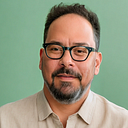Studying Culture: Ethnographic Frameworks

Develop a deep understanding of your end-users through engaging them, observing and listening to them explain their point of view, their problems and their needs.
Many in the workplace environment are constantly searching for new and better opportunities to enhance research productivity. Nothing is “cut and dry” anymore. Leaders are bogged down with social interactions and cultural diversity and are in need of innovative strategies that allow design teams to work faster and more effectively. The goal is to obtain incredible amounts of data about targeted groups of people and cultural/social interactions in a very short period of time. It allows for more focus on general observations than precise analysis. The basic principles remain steadfast and true, but the design team adapts to their own interpretation.

In order for ethnography to be effective, it must be conducted by someone with sustainable knowledge about the various methods at their disposal. This person should also have a sound understanding of their designer’s needs and requirements. A true ethnographer must know how to take control of operations in the field, the collection of data, and data analysis methods. Instant ethnography gives birth to greater precision through ethnographic description. These can be extremely effective tools for management and research design.
Ethnography Frameworks help give structure to your research. If you are unsure of which framework to consider; refer to the list of the most popular frameworks in use today.
How to Use a Framework
Observe participant in the work setting around, observing what they do and how they interact with other people and tools in their environment. Or, they may focus on key objects or artifacts in the environment, with special attention to the various roles that they play (functional, psychological and social). During another observation, the team may take notes and photographs of the work setting and try to understand how the configuration of space mediates the work performed. Finally, chart activities, including both formal workflow and practices.
Why use a Framework
Ethnography frameworks give structure to research in order to collect important information about a test subject. Frameworks also provide some certainty in an uncertain environment of fieldwork.

Nine Dimensions
Who invented — JP Spratley (1980)
- SPACE — layout of the physical setting; rooms, outdoor spaces, etc.
- ACTORS — the names and relevant details of the people involved
- ACTIVITIES — the various activities of the actors
- OBJECTS — physical elements: furniture etc.
- ACTS — specific individual actions
- EVENTS — particular occasions, e.g. meetings
- TIME — the sequence of events
- GOALS — what actors are attempting to accomplish
- FEELINGS — emotions in particular contexts
LATCH Framework
Who invented — Richard Wurman (1996)
- L — Location — Compare information sources
- A— Alphabet — Used for large volume of data
- L — Time — Used for events that occur over measurable duration of time
- A — Category — Grouped by similarity characteristics
- H — Hierarchy — Information is organized on a scale
Bringing the Outside In
Who Invented — P Sotirin (1999)
- Territory — including space and architecture
- Stuff — furniture, possession, private/public, visual signs, technology
- People — flows, dress, bodies, nonverbal behaviors, authority, affection
- Talk — conversation, vocabularies
POSTA Framework
Who invented — Pat Sachs (1999)
- P — Person
- O — Objects
- S — Situations
- T — Time
- A — Activity
